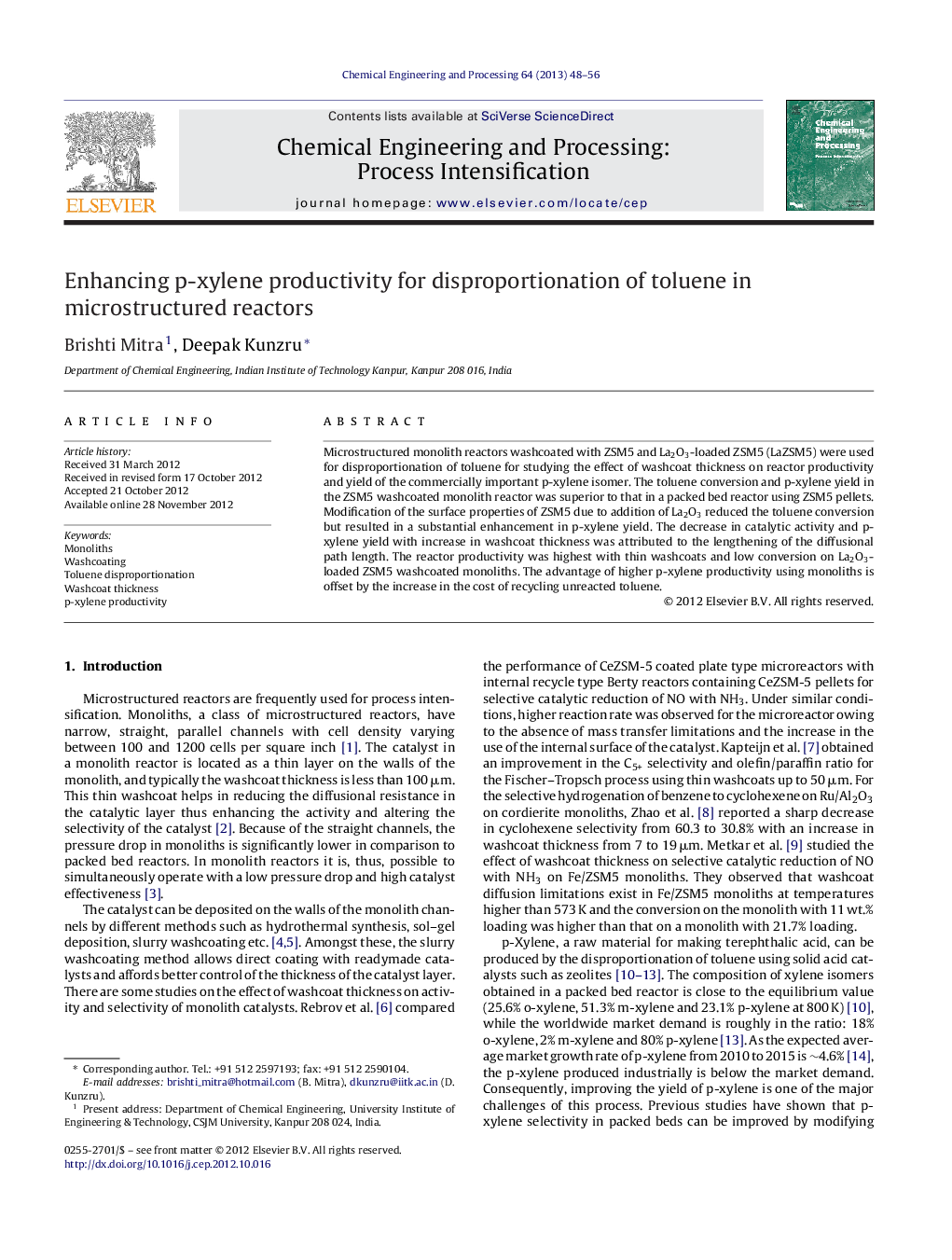| Article ID | Journal | Published Year | Pages | File Type |
|---|---|---|---|---|
| 687163 | Chemical Engineering and Processing: Process Intensification | 2013 | 9 Pages |
Microstructured monolith reactors washcoated with ZSM5 and La2O3-loaded ZSM5 (LaZSM5) were used for disproportionation of toluene for studying the effect of washcoat thickness on reactor productivity and yield of the commercially important p-xylene isomer. The toluene conversion and p-xylene yield in the ZSM5 washcoated monolith reactor was superior to that in a packed bed reactor using ZSM5 pellets. Modification of the surface properties of ZSM5 due to addition of La2O3 reduced the toluene conversion but resulted in a substantial enhancement in p-xylene yield. The decrease in catalytic activity and p-xylene yield with increase in washcoat thickness was attributed to the lengthening of the diffusional path length. The reactor productivity was highest with thin washcoats and low conversion on La2O3-loaded ZSM5 washcoated monoliths. The advantage of higher p-xylene productivity using monoliths is offset by the increase in the cost of recycling unreacted toluene.
► Monoliths coated with ZSM5 and LaZSM5 active for toluene disproportionation. ► Reduction in activity of monoliths with increase in washcoat thickness. ► Washcoated monolith reactors more selective for p-xylene than pellets. ► Enhancement in p-xylene productivity using thin washcoats. ► At iso-conversion, p-xylene yield of LaZSM5 monolith > ZSM5 monolith > ZSM5 pellet.
